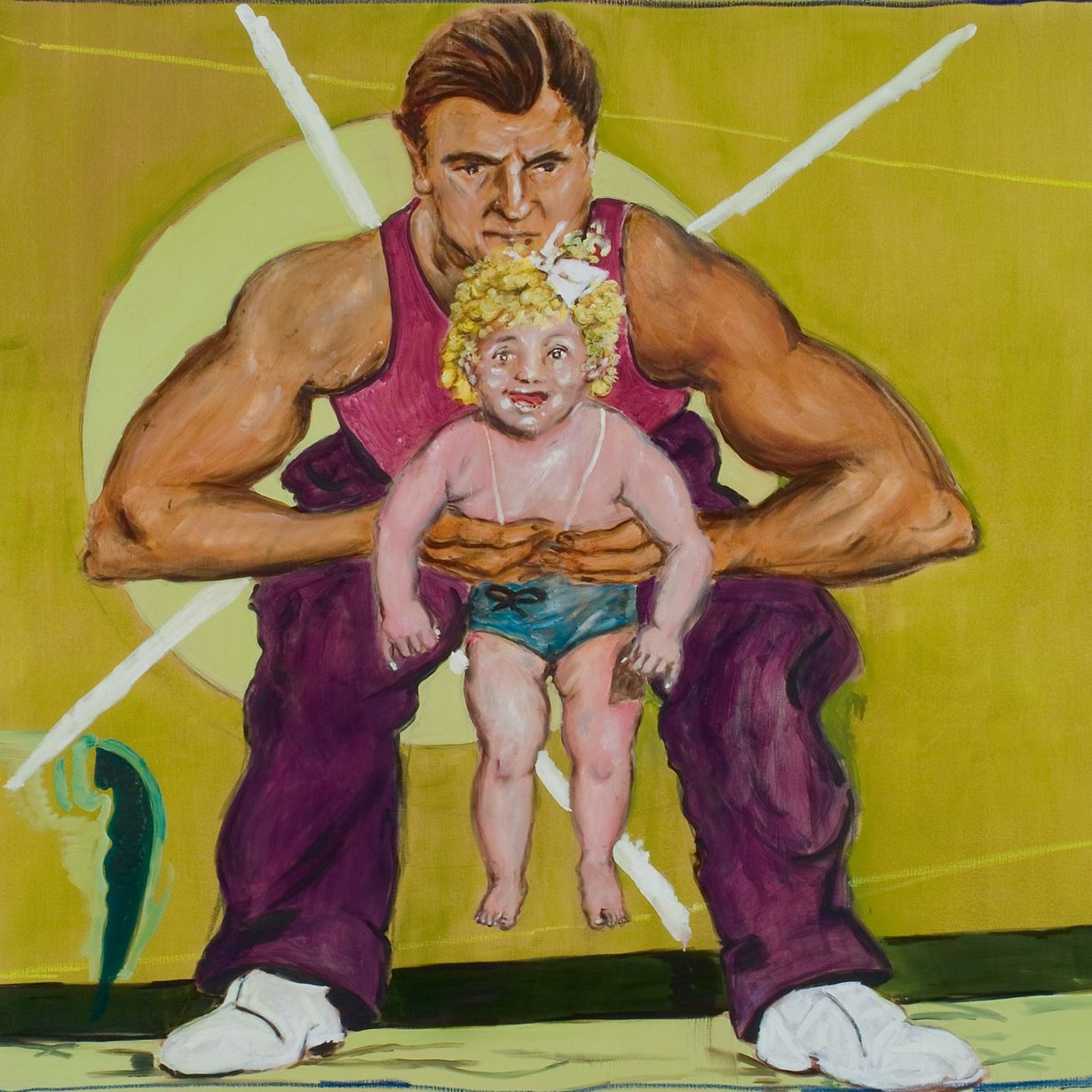The End Is Never Near, a retrospective at S.M.A.K., Ghent illuminates the work of a little-known figurative painter
In discussions of artistic fame, one aspect not often addressed is reputational asymmetry: that you can be feted in some places and barely known in others. Case in point: the painter Jan Van Imschoot, here treated to an institutional retrospective that fills seven large rooms in the city of his birth, guest-curated by the Belgian-born, Ghent educated, now US-based Dieter Roelstraete. I’d never heard of Van Imschoot before I saw The End Is Never Near, and nor had anyone outside Belgium that I quizzed. The evidence on view, though, suggests an artist who steers by his own lights, so quite possibly he wouldn’t much care.
Van Imschoot, now sixty, is framed here as foundational in the figurative-painting revival that began during the 1990s. He’s considered to have been instrumental in the career of fellow Ghentian Michaël Borremans, and a work placed early in the show, 1998’s Le Mensonge du Plomb – three men or one man repeated thrice seen from the chest upwards, their torsos dissolving into painterly mist – certainly feels like a template for Borremans’s own cryptic practice. But you couldn’t call that work characteristic; while Van Imschoot frequently depicts people, he does so diversely, often with art-historical overlays. His chief influences, which Roelstraete lays out in a useful ABC-styled booklet guide, appear to be Baroque art (though also Jan van Eyck, Johannes Vermeer and Édouard Manet) and cinema, particularly the anticlerical Surrealism of Luis Buñuel. The Catholic church, in Van Imschoot’s eyes, couches an anarchic and contradictory strain within the art it midwifed; a fascination with human flesh, emphasised here right at the start of the show in Amore Dormiente (2018), a largescale tribute of sorts to Caravaggio’s Sleeping Cupid (1608). While Cupid is usually depicted sleeping in a rejection of fleshly pleasures, here he appears half-awake, restlessly grimacing, bodied.

Emblematic of Van Imschoot’s practice in this painting and elsewhere is a late-postmodernist sense of being after: after the rarefied heights and innovations of Baroque art, after the constrictive and would-be purifying certainties of state religion, and left in a world that is sometimes visibly and irreparably fallen and specifically prone to male violence. See the 2006 series Repercussions, based on 1940s American photos showing men how to build muscle by swinging their children around, but painted while paedophilia cases were being exposed in Belgium; or the bound and bloodied women in the sadomasochistic scenes of La Canonisation du Hymen (1998). When, in one of multiple skewed homages to Manet here, Van Imschoot reprises (and inserts his behatted image into) the iconography of the Déjeuner sur l’herbe (1863) in L’échange des bêtises (2021), the painting includes a female crotch shot in a mirror, a gun pointing at a woman’s backside, several body wounds and a bloodied clawhammer. When he expressively reworks Vermeer’s Girl with a Pearl Earring (1665) in 2001’s Typecasting of a Remembrance, she’s crying gelatinous tears, just in case you missed the point.
Against this – and works like Van Imschoot’s Ladyboy series of 2007, a group of transgender nudes whom the artist painted smiling because for him, according to the ABC, they ‘symbolise the ultimate freedom’ in not fitting into gender binaries – it’s sometimes the more ambiguous canvases that feel both most indelible and least didactic. Maiden Flames and Virginity (1996) broadcasts a lot with its repression-addressing title, but the image is powerfully weird in its own terms, a lopsided and washed-out view of a rabbity woman, perhaps praying, head wrapped in a cowl, a flamelike oval rising from her head. Poltergeist (1995) crops the head off a baroquely contorted young girl in a red dress, wearing glowing white socks, the visible triangular part of one seemingly to float perversely above the picture plane, like an abstract key to the whole.
In between these extremes is a canvas from 2000 depicting a dark-haired, heavy-lidded, authentically bewitched-looking young woman in a short white dress with red trim. She’s spreading her legs, the dress covers her, pinkish liquid dribbles between her legs, but this multi-directional image is only half the work; the other half is the artist’s sardonic, knowingly oblivious or perhaps even sincere title My decent daughter. Van Imschoot, you suspect, might have made a more legible career out of hewing to works like this, and eschewing the more feverish, grandiose and button-pushing side of his practice. But The End Is Never Near, which wants to unfurl everything that’s become increasingly visible about humanity over the last four centuries, suggests he’d never be satisfied with that.
The End Is Never Near at S.M.A.K., Ghent, through 3 March
